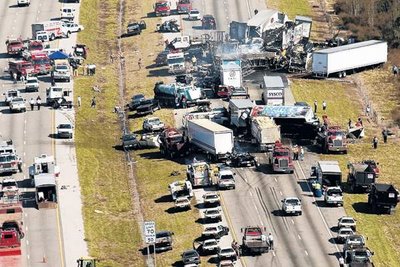The article below by Holly Neill and John N. Maclean provides the background story of how they developed the information that we reported January 19 about the Yarnell Hill Fire and the location of Eric Marsh. The Granite Mountain Hotshot crew, 19 wildland firefighters, became entrapped and were killed while fighting the fire near Yarnell, Arizona on June 30, 2013.
While Holly and John are not equipped to upload and store huge video files online, others are doing so. Tomorrow, we will provide on Wildfire Today the video file names and folder locations in the Serious Accident Investigation Team record where the videos we refer to are located.
(UPDATE, January 21: today we published an article containing information about sources of Holly and John’s information: Sources for the Neill/Maclean Yarnell Hill Fire analysis )
****
A Note About the Accuracy of the Marsh Tapes
By Holly Neill and John N. Maclean
Our story about the previously undisclosed radio transmissions by Eric Marsh, superintendent of the Granite Mountain Hotshots, has caused a surge of interest on this site and elsewhere. Out of respect for the seriousness of most of that interest, here is a short account of how the transmissions were found and what attempts were made to verify them before we published them on the Wildfiretoday.com site.
Holly Neill made a public records request through the Arizona State Forestry Department on October 31; this was a specific request for the Aerial Retardant Study Videos that were filmed during the Yarnell Hill Fire. Holly thought that these audio-visual records, documenting the use aerial retardant on the fire, might reveal important information – if only by recording background conversations. She received these records, which are voluminous, on December 16. (Holly and John also requested and received the broader data package, the material from the Serious Accident Investigation Report, which includes the retardant study and much other material.)
Within a few days, she discovered the most significant transmission that we’ve reported, in which Marsh says he is at “the house where we’re going to jump out at.” The remaining audio conversations were transcribed and put together in a timeline from 1542 hrs to 1630 hrs.
Holly then took the “house we’re going to jump out at” recording to a professional audio company, who cleaned the audio file, and then cleaned it again with an audio program. The quotes can be heard without this treatment, but they are clearer after treatment. Holly’s husband Wayne and John both listened to the transmission and agreed on what was heard, which was reproduced in yesterday’s story. Outsiders, with a professional interest in the fire, also listened and did not dispute the transcript.
We then faced a decision about what to do next.
Holly wanted to pass along the material to the Granite Mountain Hotshot families before it went to anyone else. She did so on December 21, to the one family with whom she has direct contact.
On January 6 Holly provided the audio information to the Arizona Division of Occupational Safety and Health and their investigators, Wildland Fire Associates. The state agency is conducting further studies, which will take time.
We waited a while longer, but ultimately decided that the findings, which come from public documents, should be made public.
This may seem like, and is, a convoluted explanation. But the interest level in this story is high and questions have been raised about our methodology. We used public documents, took our time, and did our own work.




